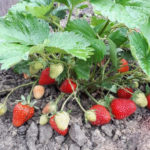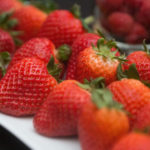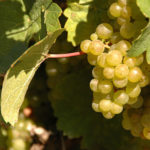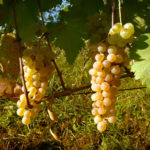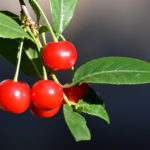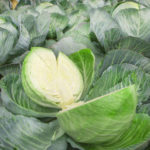Strawberry variety Vicoda
Vicoda is a non-repairable variety of garden strawberries (strawberries) of late ripening. It was bred by specialists from the Dutch company Vissers Aardbeiplanten B. V. It is famous for its large-fruited, high yield, good taste, and cold resistance, which makes it promising for growing in regions with a harsh climate. According to many gardeners and farmers, this strawberry is quite worthy to be called the best among the late-ripening ones. It is especially attractive for cultivation in central Russia and in the north-west of the country, as well as in almost all regions of Ukraine and Belarus.
The plant is erect, vigorous, tall, multi-lined, abundantly leafy. The cultivation of the variety is extremely poor. The leaves are large, dense, corrugated, light green matte color. The flowers are bisexual, white. Vicoda has one very interesting feature - often the flowers grow together in several pieces, subsequently forming one huge bizarre berry. This phenomenon is called fasciation, and it is observed more often at the very first collection. Peduncles are powerful, erect, strong, and are laid on the ground under the weight of a bountiful harvest. Strawberries form quite a few peduncles (about 10 pieces), on which, in turn, an impressive number of fruits are formed. Thus, from one Vicoda bush it is possible to collect more than 50 berries per season!
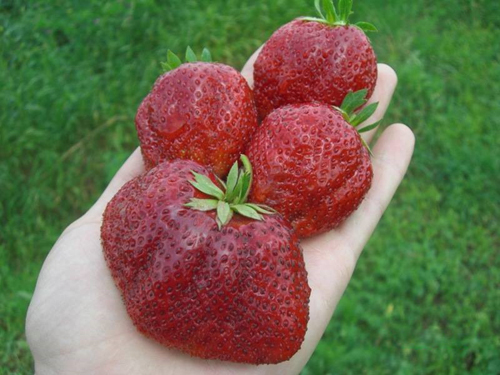
The fruits of the variety are really very large, and sometimes literally gigantic. In the bulk, the berries have a wide-conical shape, slightly flattened from the sides, tending to a round one. At the first collection, comb-shaped specimens predominate, and the "mutant fruits" formed as a result of intergrowth of flowers have a fan-shaped outline. By the way, these giant Vicoda berries sometimes look like some kind of overseas fruit - they don't even fit in the palm of your hand! The peel of the strawberry fruit is colored dark red; when fully ripe, it acquires a cherry hue. Achenes are numerous, yellow, shallowly depressed. The largest number of seeds usually concentrates on the tip of the fruit, which is why even fully ripe berries may have an incomplete color with a light green tip. The pulp is bright red, dense, juicy, with a multifaceted aroma, playing with notes of strawberries, fruits and even cherries. No voids are formed inside the fruit, due to which even the largest specimens are very heavy and dense. But it is worth noting that in dry seasons, voids inside the berries can still be observed.
Vicoda has a very peculiar taste. It can be safely called dessert, the pulp is fleshy, despite its density, rich-sweet, with a spicy nutmeg aftertaste, giving off hints of fruit. According to gardeners, the taste of this strawberry is really outstanding, it is one of the varieties that optimally combine two main characteristics - the great taste of berries and high yield. However, there is one very interesting point. In the description of the variety, the originator indicates that the taste of strawberries is not very good. It is difficult to understand why the Dutch thought this way, maybe they have their own understanding of the "dessert" taste. And as for the gardeners of Russia, Ukraine and Belarus - they like the taste of Vikoda.
The berries perfectly tolerate transportation due to their dense pulp, have an excellent presentation, and giant specimens give the variety a mystery against the background of other varieties on the market. However, not everything is so rosy. Firstly, in hot seasons, the fruits lose their density, so they tolerate transportation worse, especially if they are already fully ripe. Secondly, when picking, the berries are often separated from the sepal. On the one hand, this does not affect transportability - the strawberries still remain dry and tidy, do not wrinkle or flow.On the other hand, this small nuance is not particularly welcome in farming circles, for commercial varieties such a feature is unacceptable. Still, this problem does not prevent Vicoda from being popular with entrepreneurs who grow strawberries on an industrial scale.
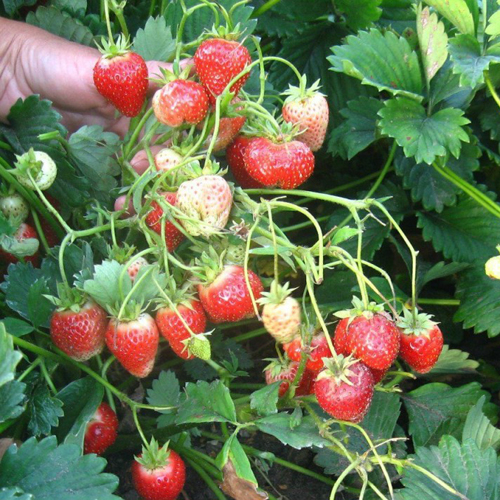
The fruits are versatile in use, suitable for any kind of processing, excellent in preserves, jams, suitable for whole-fruit canning, and also ideal for freezing. But especially the berries are great fresh - large, like an apple, juicy and sweet, and besides with a unique aroma. By the way, strawberries acquire the best flavor palette at the stage of full maturity, when the fruits turn dark red, almost cherry color. However, for commercial cultivation, it is recommended to harvest at technical ripeness, because fully ripened berries become rather soft and do not tolerate transportation well.
Finally, let's move on to the characteristics of the productivity of the variety. The average weight of fruits varies within very large limits - from 30 to 60 grams. At the first harvest, the weight of the berries is much higher, the record holders can reach 120 grams. Fruiting in Vikoda is quite stable, the fruits do not shrink throughout the season, only by the end of the harvest they become slightly less, but the weight does not fall below 30 grams. Strawberries ripen around mid-July, 18 days later than the reference Elsants... The fruiting period is rather short, the plants quickly give up the entire harvest, ripening occurs in unison, so the harvest is very productive and does not stretch over time.
The yield of the variety is very high, varies greatly depending on the intensity of agricultural technology - from 1 to 3 kg of berries per plant. It is worth saying that the figure of 1 kg of fruit per bush is quite achievable even in conditions of not the most ideal care, and this moment really deserves attention. Many popular commercial varieties are able to show such results only with a very meticulous attitude towards themselves and abundant feeding, while our heroine gives excellent yields even with moderate agricultural technology. According to gardeners, the maximum yield is given by three-year-old bushes - 1.3 kg per plant. These are really impressive results.
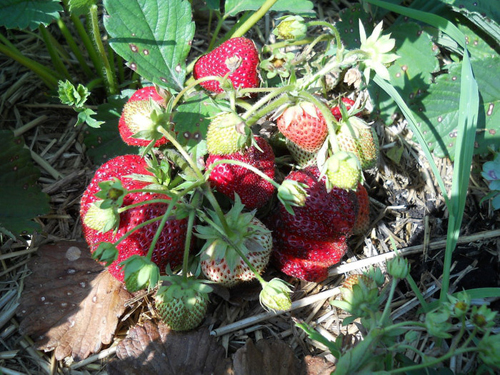
Vicoda is extremely resistant to various fungal diseases, including leaf spots and verticillium wilt, as well as rot. Strawberries are very suitable for organic farming, as they do not require regular chemical treatments, which, by the way, again adds to its attractiveness against the background of other high-yielding commercial varieties. Also, our heroine is very winter-hardy, you can even call her one of the most winter-hardy varieties of foreign selection. It can be grown successfully in regions with very cold climates, but of course, shelter is never superfluous. Frost resistance in strawberries is also at a high level, spring frosts will not harm the plants in any way, but it is still advisable to think about covering materials.
But with the drought resistance of Vicoda, everything is not so simple. In principle, the variety tolerates periods of drought rather calmly, but the lack of moisture has a bad effect on the yield and consumer qualities of the fruit. As already mentioned, in hot and dry seasons, the berries become much softer, voids can form inside them. In addition, the size of the fruit will also decline. Therefore, you should still take care of ensuring the plantings with regular watering. The heat resistance of the variety is very good, in hot regions it feels quite fine, and together with regular watering it shows excellent productivity results.
It's time to talk about agricultural technology.Vicoda is quite easy to care for, not capricious, does not require constant attention to itself. Of course, she will respond to all your efforts, so you should still devote enough time and effort to her. The first thing you should pay attention to is that strawberries react very negatively to thickening. Bushes are planted at a distance of at least 40-45 cm from each other, and, if possible, 60 cm.This free planting will have a very positive effect on the yield and health of the plants, since the root system will be very comfortable and the bushes will not suffer from lack of nutrition. The second point - it is recommended to mulch the near-root zone in order to avoid further drying out of the soil.

One of the most important nuances is providing Vicoda with regular watering. The best solution would be to install a drip irrigation system. A sufficient amount of moisture will have a very positive effect on the yield of the variety, but its excess can play a cruel joke - the sugar content in the fruits may decrease. This problem is also relevant during rainy seasons. As for dressings, they are carried out according to the standard scheme. Vicoda does not require an excessive amount of fertilizers, as well as the use of growth stimulants. In general, feed your strawberries as needed based on your soil and growing goals. But it is clearly not worth neglecting feeding, since an insufficient amount of nutrients in the soil will lead to a decrease in the sugar content of the berries, and it will not affect the plants themselves very well. By the way, foliar feeding will also be useful.
It is recommended to grow the variety for 3-4 years, and then renew the planting. Bushes reach their peak productivity in the 3rd year of use, and then their yield begins to decline, so it is very important to replace the planting material on time. In general, it should be said that such a lifespan is quite good, especially in comparison with the indicators of other varieties, which fully develop their resource in the second year of use. By the way, due to the very poor formation of Vicoda, problems with its reproduction may arise, therefore it is advisable to separate the plantings. Strawberries in the mother liquor are not allowed to bear fruit, plucking flowers so that the plants give all their strength to reproduce. And the bushes on the "productive" site purposefully work for the harvest, while they do not need an action to remove the whiskers - plants that bear fruit abundantly form no more than 2-3 whiskers, and often they do not have enough strength even for one.
So, what I would like to say at the end. This variety can justifiably be called the diamond of the strawberry market. According to all its characteristics, it is really beautiful, there is even nothing to complain about. And perhaps it is very difficult to find an analogue to it among other popular varieties; it is very attractive for both farmers and ordinary gardeners. But Vicoda must have at least some disadvantages, right? Probably, they should, but they have not yet been found. There is only one problem - unscrupulous sellers of seedlings. If you purchased this strawberry, expecting to grow giant tasty berries, but in the end received a modest harvest of frank trifles, you should not be disappointed in the variety. Most likely, they just slipped you some completely different variety, so to speak. Therefore, buy seedlings only from trusted sellers who are responsible for their assortment.
